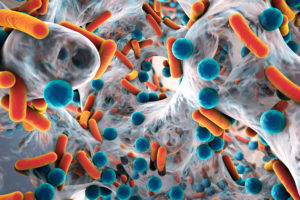
Molecular Tweezers Fight Antibiotic-Resistant Bacteria
Molecular Tweezers Fight Antibiotic-Resistant Bacteria
June 21, 2021 - Summarized from Bio-IT World
Medical Research, Research News
Bio-IT World – An international team of researchers has come up with a new application for “molecular tweezers,” originally developed to untangle the amyloid nanofibers found in the brain of patients with Alzheimer’s and Parkinson’s disease.
As it turns out, the tiny synthetic molecules may also be a way to prevent and treat bacterial infections like Staphylococcus aureus that have grown resistant to antibiotics, according to Prof. Raz Jelinek, vice-president & dean for research & development at Ben-Gurion University of the Negev (BGU).
Shielded by biofilms, bacteria can quickly multiply and start wreaking havoc in the body, says Jelinek. The clinical potential is untrivial. In the U.S., S. aureus infections have an estimated mortality rate of over 25%—up to 40% when a drug-resistant strain is the culprit, he says.
The novel strategy targets biofilms that bacteria build around themselves once they reach a certain population threshold, he explains. This protective shield is stable, resilient, and impenetrable by chemicals the immune system uses to fight off pathogens and is part of the reason bacterial infections can be dangerous if not lethal.
Jelinek says he hopes his current line of research will lead to a marketable treatment, possibly a pill containing millions of “swallowable tweezers” that could identify bacteria-affiliated biofilms in the body and break them apart.





